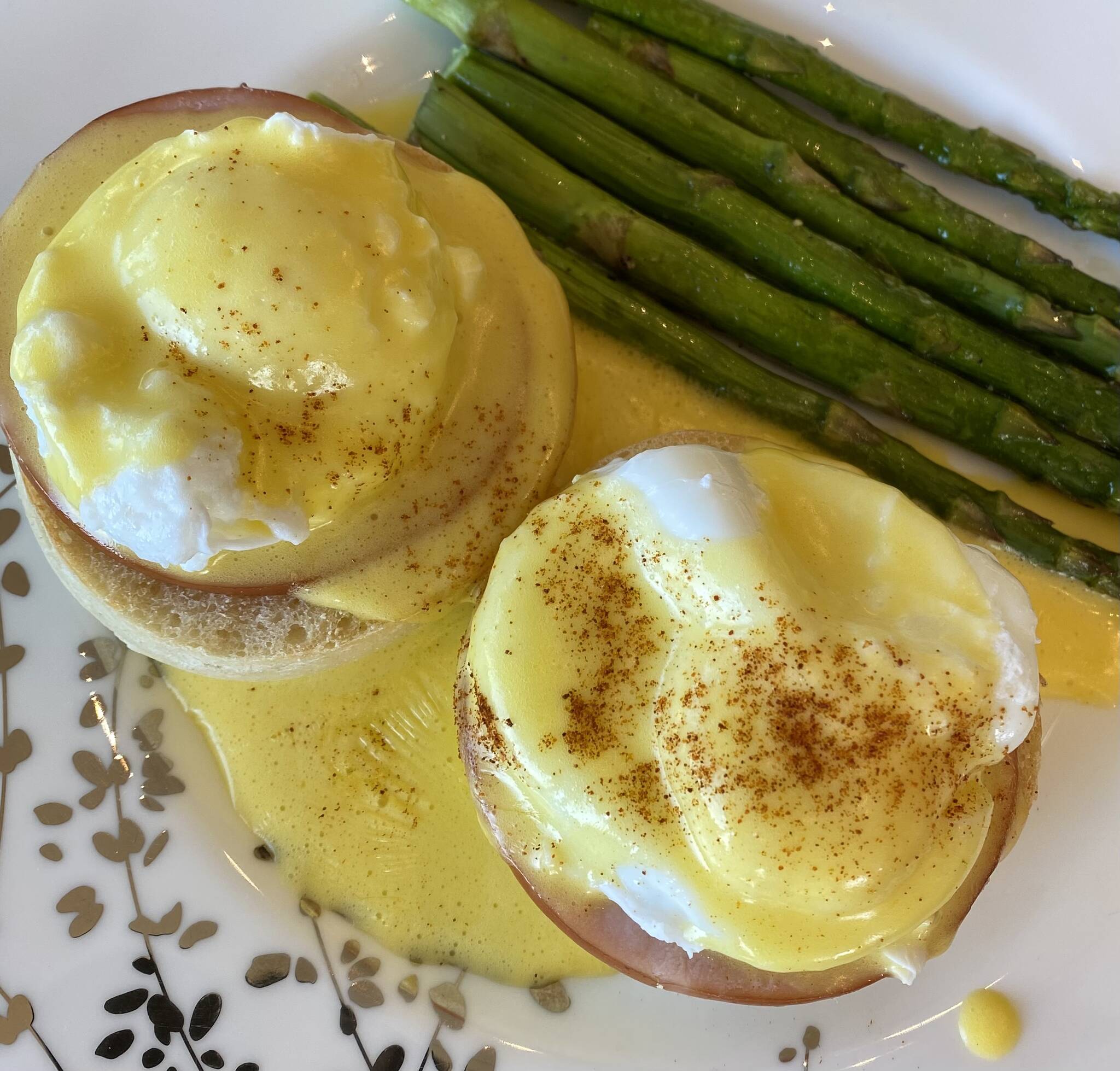On the first day in the kitchen of culinary school, our chef instructor has a tradition: He demonstrates his blindfolded hollandaise. He brags that he has done it so many times, he can make the notoriously difficult sauce by muscle memory alone. We gathered around and watched him whisk yolks and lemon juice and expertly drizzle clarified butter in (only spilling a few drops) until a smooth, glossy sauce filled the bowl. He tossed his whisk over his shoulder with performative flair and dramatically declared his sauce was complete. We all reached forward with our tasting spoons and sampled the expertly prepared sauce, and it was truly perfect.
While it doesn’t take a lifetime of work in professional kitchens to master this classic French mother sauce, it certainly does take practice and focus, and even pros break their sauce from time to time. I broke my first attempt on Sunday and I’m sure my family could see steam coming from my ears as I cleaned out the bowl and cracked some more eggs — how embarrassing.
Ingredients:
3 egg yolks
1-2 teaspoons lemon juice
½ teaspoon Dijon mustard
½ cup unsalted butter
Salt to taste
Dash of paprika or cayenne
Directions:
Clarify the butter by melting over medium low heat. The butter will eventually separate, and the milk solids will settle at the bottom. Turn off the heat and allow to cool for a few minutes before carefully pouring out the liquid into a container with a spout (for easy pouring later), being careful to keep as much of the milk solids in the pan as possible. Keep the butter warm.
Prepare a double boiler by propping a heat-proof bowl (either glass or metal) onto a saucepan with an inch of water in the bottom. You want the bottom of the pan to hover above the water but not touch. This will prevent the sauce from getting too hot.
Remove the bowl from the pan and turn on the heat. Bring the water up to almost boiling and keep it there.
Whisk the egg yolks, mustard, and 1 teaspoon of lemon juice in the bowl until the sauce has lightened in color and thickened slightly.
Place over the hot water and whisk continuously and vigorously. Keep a thermometer in the pan to monitor the temperature. At no point should the sauce cross the 160-degree threshold, or the eggs will likely curdle. Move the bowl off and on the pan to control the temperature.
When the sauce has doubled in volume, it’s time to begin adding the warm clarified butter.
Work very slowly, just a splash at a time, while whisking constantly until all the butter has been added. Watch the heat the whole time and remove and replace the bowl on the pan as necessary to keep the sauce under 160 degrees.
Taste the sauce and season with salt, paprika or cayenne, and extra lemon juice if necessary. Serve immediately — it doesn’t hold.
Some notes and tips:
If the sauce separates, you might be able to save it with a few splashes of hot water and a fast whisk, but if you see grainy bits in the sauce, the eggs have curdled, and you’ll need to start again.
You can use solid butter cut into small pieces instead of clarified butter. This will make the sauce harder to break, as the cold butter keeps the temperature of the sauce low, but it will take much longer to complete, which could mean you have overcooked poached eggs under your perfect sauce. If you can manage your cooking times appropriately, this is a decent option.
This sauce should never reach 165 degrees, which is the safe cooking temperature for eggs, so be positive you’re using pasteurized eggs if that is a concern for you.


